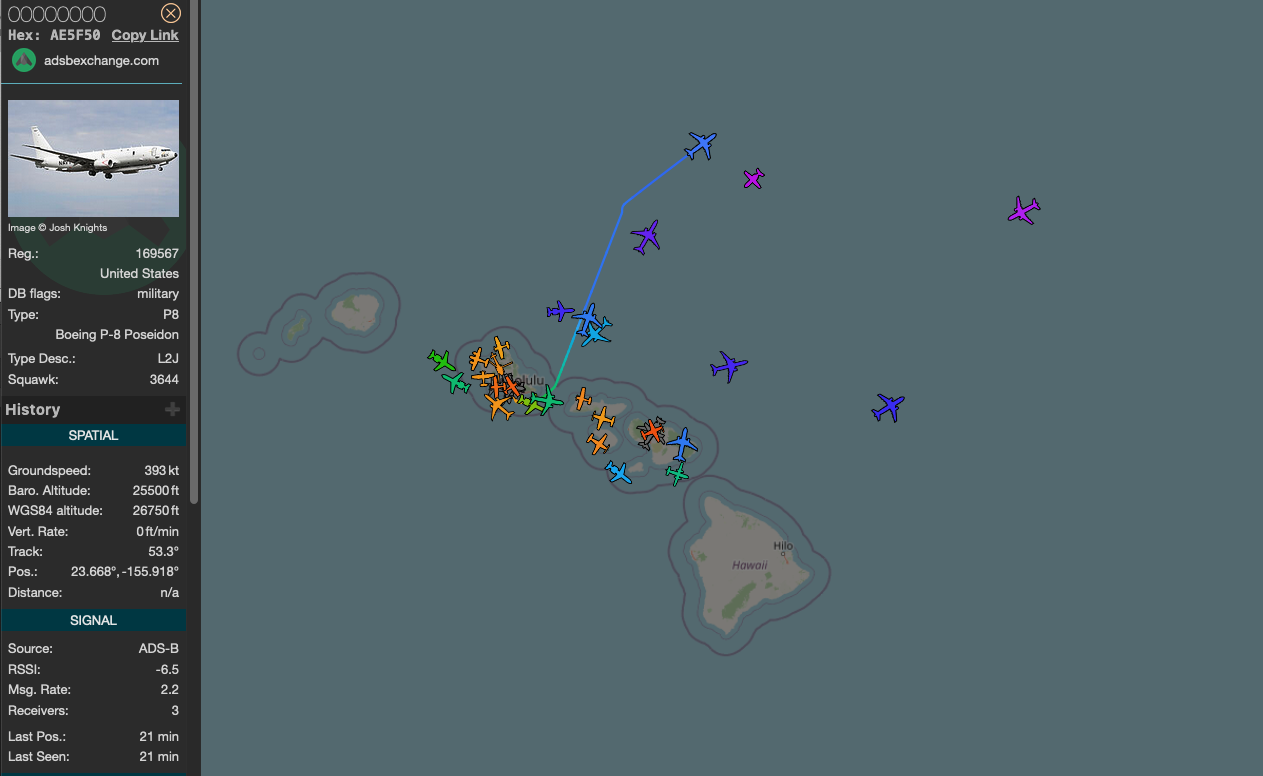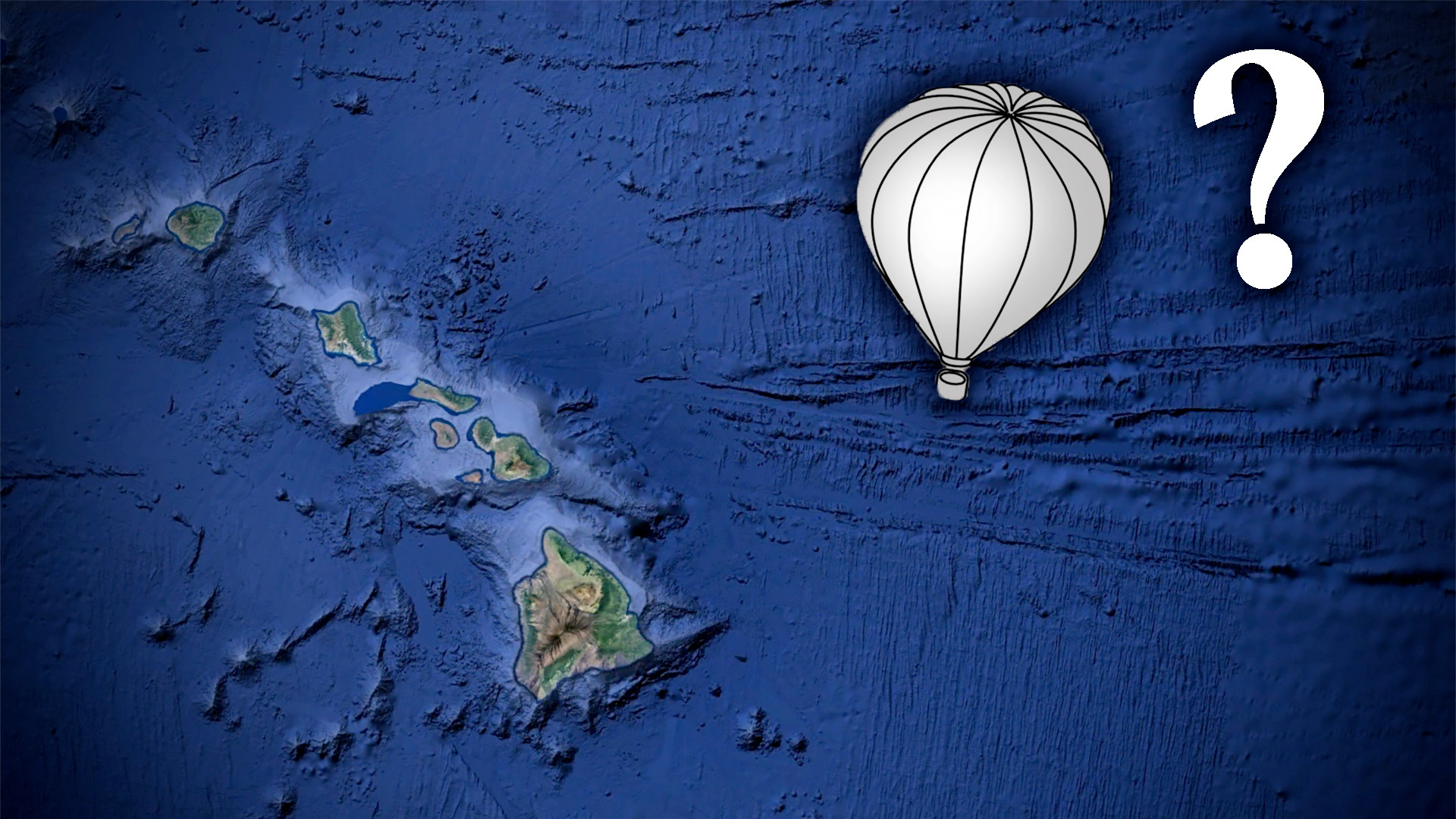According to multiple reports, the FAA notified pilots of a sighting of a large white balloon at between 40,000 and 50,000 feet roughly 600 miles east of the Hawaiian Islands. Subsequent ACARS (Aircraft Communications, Addressing and Reporting System) messages show aircraft in the area — which is normally quite busy as it sits on the route from the U.S. west coast to Hawaii — acknowledging the alert, which includes a request to report back if they spot any such object.
It’s unclear when the initial report of the balloon was made to FAA, but alerts about it appear to have been going out to pilots since at least 7:46 A.M. local time in Hawaii, or nearly 10 hours ago.
The War Zone has reached out to U.S. Indo-Pacific Command (INDOPACOM) to see if they are tracking the object or have scrambled fighter aircraft to inspect it. We have also reached out to the FAA to authenticate that there was indeed a balloon spotted as the ACARS messages to pilots refer to and to get more on the status of the balloon if that is indeed the case. We will let you know what we hear as soon as we get a response.
Mysterious balloon activity near the strategic islands is not unheard of. Just a year ago nearly to the day, we reported on a large balloon loitering off Kauai, Hawaii’s northernmost large island, near where a sensitive missile defense test site is located. F-22s from Honolulu went to inspect the balloon, which caused quite the stir. It turns out, this balloon belonged to the Chinese spying program which has now been disclosed as having existed for years, with multiple known operations near or over U.S. territory. It has also been reported that the balloon shot down off South Carolina was originally intended to pass over or near Guam and Hawaii.
Hopefully, we will get more information that can confirm the existence of the balloon. We will update this post with more details as soon as we get them.
UPDATE: 10:37 P.M. EST—
A Navy P-8 Poseidon was heading in the direction of where the balloon was reported just moments ago before it dropped off the tracker. It was at cruise altitude and speed. We cannot say with any certainty that it was on a mission to search for the balloon and observe it, but it would match with the direction for doing so. Still, P-8s often reposition back to the continental United States along these types of routes, so it is just interesting at best at this point.

UPDATE: 3:36 A.M. EST—
U.S. Indo-Pacific Command has gotten back to us with the following:
“U.S. Indo-Pacific Command is aware of the reports of a large white balloon by civilian aircraft. We are looking into the reports and have nothing additional at this time.”
This reply validates reports of this being at least an issue of interest.
As for that P-8, thanks to some sharp-eared radio aficionados, we know it did not head back to the continental U.S. Rather, it went on a mission for about six hours in the general direction of where the balloon was spotted under ‘due regard.’ This is where the aircraft’s commander assumes responsibility for keeping the vehicle from colliding with other traffic – hence its transponder being turned off.
Based on the info available, this P-8 could be a ‘special’ Poseidon that can be equipped to carry one of the most capable radars on the planet in a ventral canoe. Working in a secondary mode, this could be especially useful for detecting slow-moving aerial targets like a balloon, although from what we understand about the system it is mainly an air-to-surface type that is especially capable of surveilling littoral areas. Regardless, if it is indeed one of these aircraft, it is one of the most capable intelligence-gathering platforms available.
We must stress that we do not know if it is on a mission related to the balloon. P-8s of any configuration have an array of missions they could be executing in this area, but if U.S. Indo-Pacific Command is interested in the target in question, this would be a relevant long-range asset to send out to take a look.
Contact the author: tyler@thedrive.com
